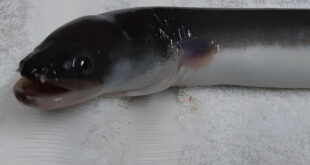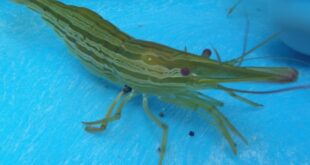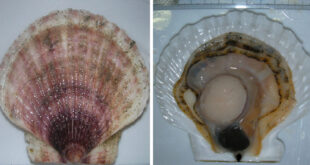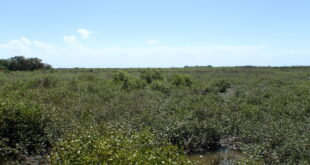By Development Communication Section

Dr. Emilia T. Quinitio was honored with the task of delivering the traditional Dean Domiciano K. Villaluz Memorial Lecture which is now running on its 22nd year. Her talk is entitled Mud Crab Farming in the Philippines: The Next Sunshine Industry? Here is an extract of her timely topic.
SEAFDEC Aquaculture Department has succeeded in domesticating the mud crab Scylla serrata by closing its lifecycle. Recently, the National Mud Crab Science and Technology Program was jointly implemented by SEAFDEC/AQD and the University of the Philippines Visayas and funded by the Department of Science and Technology of the Philippines. The program aims to refine the existing technologies in all phases of culture and to reduce dependence on wild-caught seeds and juveniles. During the nursery phase, high economic losses are attributed to cannibalism. Giving sufficient food and shelters, reducing stocking density, size grading and removal or trimming of claws are commonly practiced to minimize the incidence of cannibalism. Recent, laboratory findings showed that incorporating tryptophan in the diet can reduce the aggressive behavior of crabs.
The polyculture of crabs with one or two finfish species in earthen brackishwater ponds is the most common practice of mud crab farming. The monoculture of crabs involves the long-term grow-out culture of juveniles to market size for 3 to 5 months at low densities in ponds or net pens in existing mangrove areas. The fattening of lean or “empty” crabs also locally known as “hagas” is also a very popular practice among farmers as this requires a short culture period of 15-45 days in floating cages inside earthen ponds or in individualized compartments in mangrove areas. It is popular because it is profitable and has a short culture period with lesser risks. The techniques for soft-shell crab production established in Myanmar and Thailand have been adopted and refined for Philippine conditions. This technology is demonstrated at the Dumangas Brackishwater Station of SEAFDEC/AQD and funded by the Philippine Council for Agriculture, Aquatic and Natural Resources Research and Development. In other ASEAN countries, mud crabs weighing 60-100 g are sourced mainly from the wild for soft-shell crab production while the SEAFDEC/AQD project had shown the feasibility of using hatchery produced crablets (<1cm carapace width) grown in net cages for seven to eight weeks followed by a one-and-a-half to two-month grow out period in ponds prior to stocking in individual perforated boxes. The crabs can be polycultured with fish in the same pond to maximize the use of space.
The stocking density for mud crab farming is low owing to its cannibalistic nature. Cannibalism starts early during the megalopa stage when the pinchers develop. Because it is not an intensive farming system, the requirement for seedstock and occurrence of diseases is lower than that of shrimp farming. The polyculture system where natural food such as snails, filamentous algae and “lablab” are available as food, is a more sustainable option. Other food items such as low-value bivalves, agriculture by-products and food wastes are also utilized. The active foraging behavior of mud crabs and their strong claws make them an ideal biological control of pond snails, which are considered pests.
Like milkfish, mud crab farming has long been established in the Philippines. The development of farming technologies in all phases of culture has made mud crab aquaculture attractive and suitable to both big entrepreneurs and small-holder family-based businesses in rural communities, thus increasing incomes and employment opportunities for fish farmers in coastal communities.
After her lecture, Dr. Emilia Quinitio was awarded a plaque of appreciation jointly given by the Chief of SEAFDEC/AQD, Dr. Felix Ayson; by the head of the Research Division, Dr. Ma. Junemie Ramos; and by the son of Dean Villaluz, Mr. Antonio Villaluz.
 SEAFDEC/AQD Southeast Asian Fisheries Development Center | Aquaculture Department
SEAFDEC/AQD Southeast Asian Fisheries Development Center | Aquaculture Department



